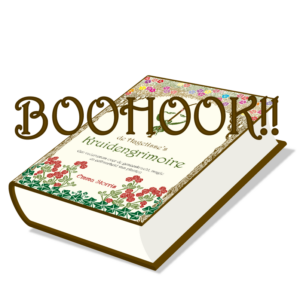
You often see me with a liquorice stick in my mouth. I just love the plant that produced it, Glycyrrhiza glabra. A word of warning, regular and extensive use of liquorice is a bad idea if you blood pressure tends to be high. But mine is not, so I can chew away on my piece of liquorice root all I want. It cleans my teeth as well, which is a bonus.
As you can tell from what I said above, liquorice raises blood pressure. This is a useful characteristic in cases of adrenal fatigue, of which low blood pressure is often a symptom. The cortisol-regulating property of this plant also comes in handy when treating this condition.
However, liquorice has plenty more interesting properties. It influences a range of afflictions, from regulating sex hormones to improving skin conditions. It helps against problems in the gastrointestinal and respiratory tract. As a result, the list of indications in this monograph is long.
Liquorice is a pretty useful plant when performing magic too, although its use in that area is a lot more focused. It has a magical effect on all kinds of indications related to love and lust. Another convenient application is its use as an instant wand during ritual work.
Liquorice is a large shrub, up to two metres high and at least a metre wide. Its root system is impressive. The main root goes up to five metres deep and the lateral roots can grow up to eight metres long. These stolons are sweet in taste, dark brown and ribbed on the outside and yellow on the inside. Those are the parts we all know as liquorice sticks.
As for the rest of the plant, it has a sturdy, pannose, furrowed, hollow stem, which does not branch much. The compound leaves are located on the lateral branches. These are imparipinnate and consist of seven to fifteen oblong leaflets. They are sticky on their undersides because of the oil glands present.
The papilionaceous flowers grow in racemes from the leaf axil and are lilac, purple or blue in colour. After flowering, the long, flat pods containing the brown oval seeds emerge.
Liquorice root is the main ingredient in the sweet called liquorice, which was originally created by adding flour and sugar to liquorice extract.
Liquorice has been used medicinally for a long time, but only became a familiar sight throughout Europe in the fifteenth century.
Another useful variant is Glycyrrhiza uralensis.
Basic membership is free. A plant monograph contains:
It's not allowed to copy content of this website
and view hidden content
